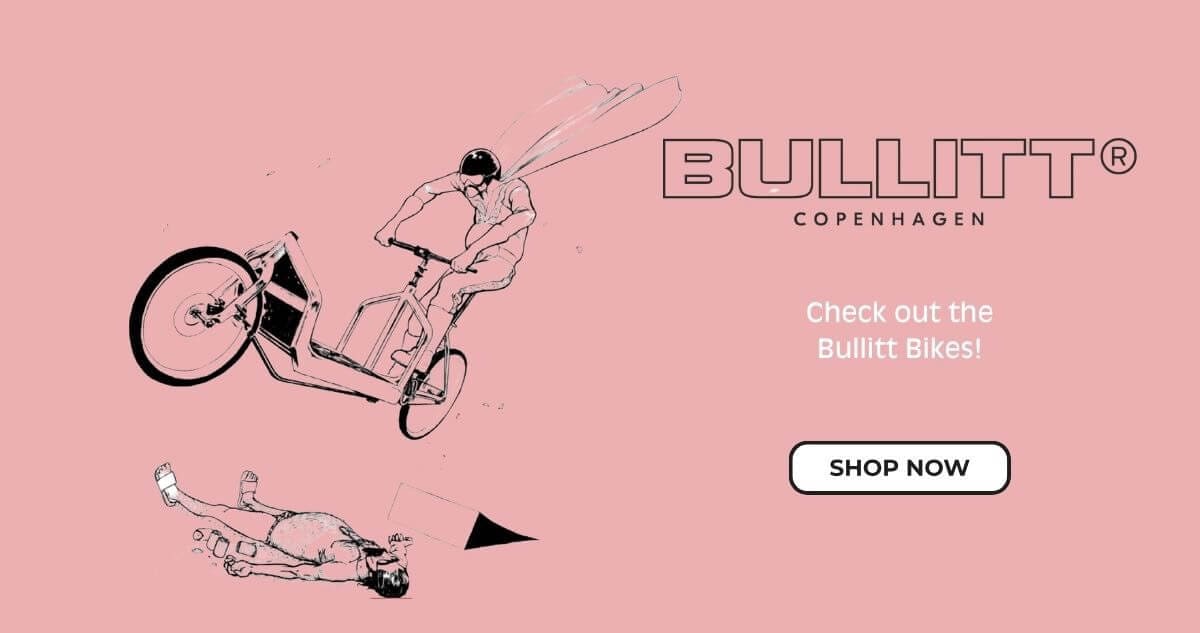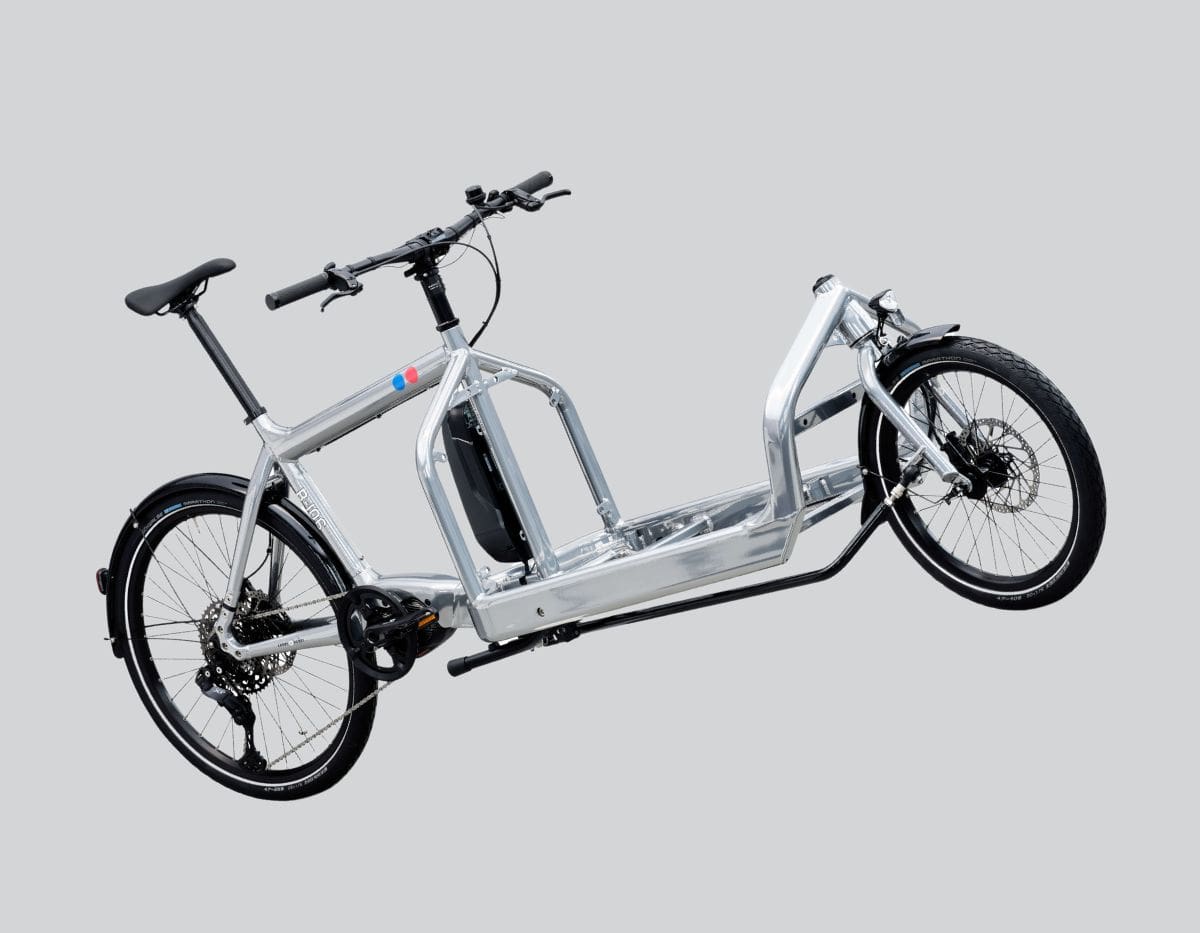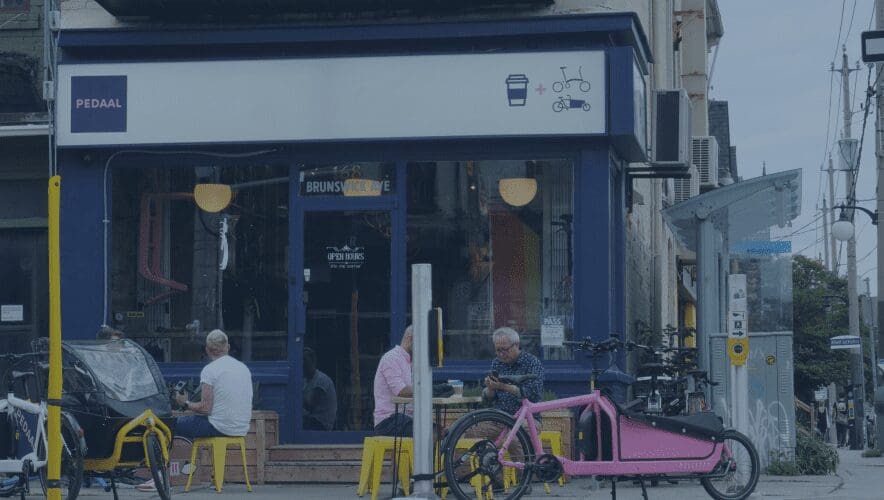Designed in Denmark – the tip of the spear for urban cycling – a Bullitt puts passengers in a sturdy, impact-resistant box right where they belong: in the front. That means: in sight, in reach, and protected from accidents. This couldn’t be more different than a longtail cargo bike. On a longtail, kids are plunked on the back, exposed and out of view, and staring at your sweaty back rather than the world ahead. Since 2007, Bullitt has been front row in shaping the world’s best cargo bikes, while longtails – arriving much later – still take a backseat in safety and ride quality. Let’s explore why.
Origin Stories
The origin stories of these two cargo bikes tell the whole story. The longtail was both an American invention and an American intervention; it was first conceived at Stanford University by Ross Evans (below) while doing volunteer work in Nicaragua. Ross Evans designed the longtail as a practical substitute for cars. Nicaragua is the second poorest nation in the America’s, after Haiti and people simply can’t afford cars. Nicaragua has 144 cars per 1000 people. the lowest in the Americas. The longtail was meant to be that solution.
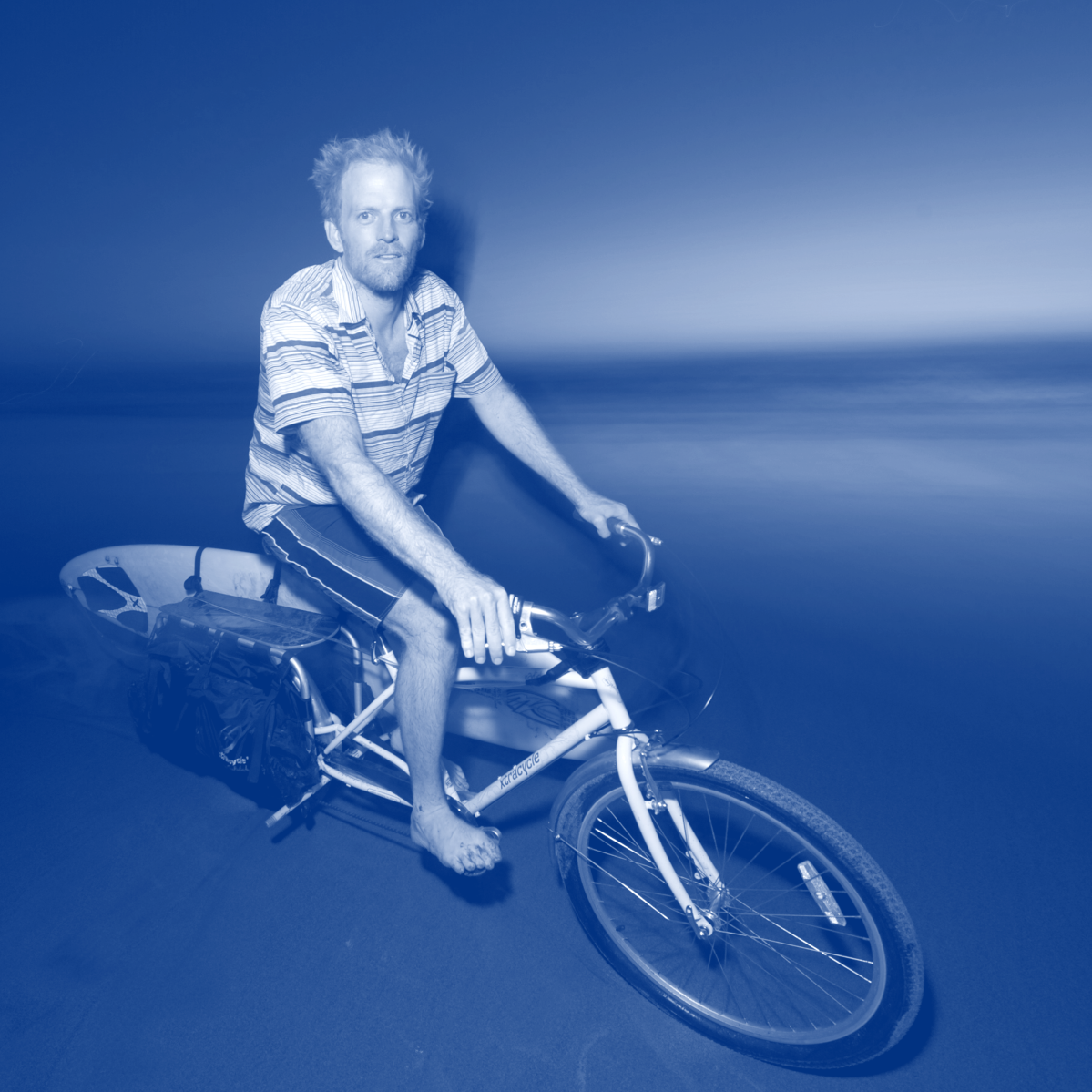
Of course, fewer cars on the road also makes riding any bike safer. With so few automobiles, a place like Nicaragua hardly acts as the design ecosystem that creates a safer bikes. That’s why it’s important to compare Ross Evan’s invention in Nicaragua to his home in North America. In the United States, where Stanford is located, car ownership is 850 cars per 1000 people. Thus, in North America, a bike is not a stand-in for a car as much as it is a competitor to a car. If a bike can compete with a car – and it can – then the reality is that it will also always be in the same space as cars.
Safe Cities or Safe Bicycles? Both!
This is true in places like Denmark and the Netherlands too, where car ownership is an average of 520 cars per 1000 people. Making places safer for bikes in places with heavy automobile use is important, but making the bikes safer too is the necessary correlate. And, that’s exactly how the front-loader first developed in Copenhagen. Copenhagen was once a sprawled out city dominated by the automobile. Safe bicycling infrastructure was developed in tandem with safe bicycle design. Longtails wouldn’t have cut it.
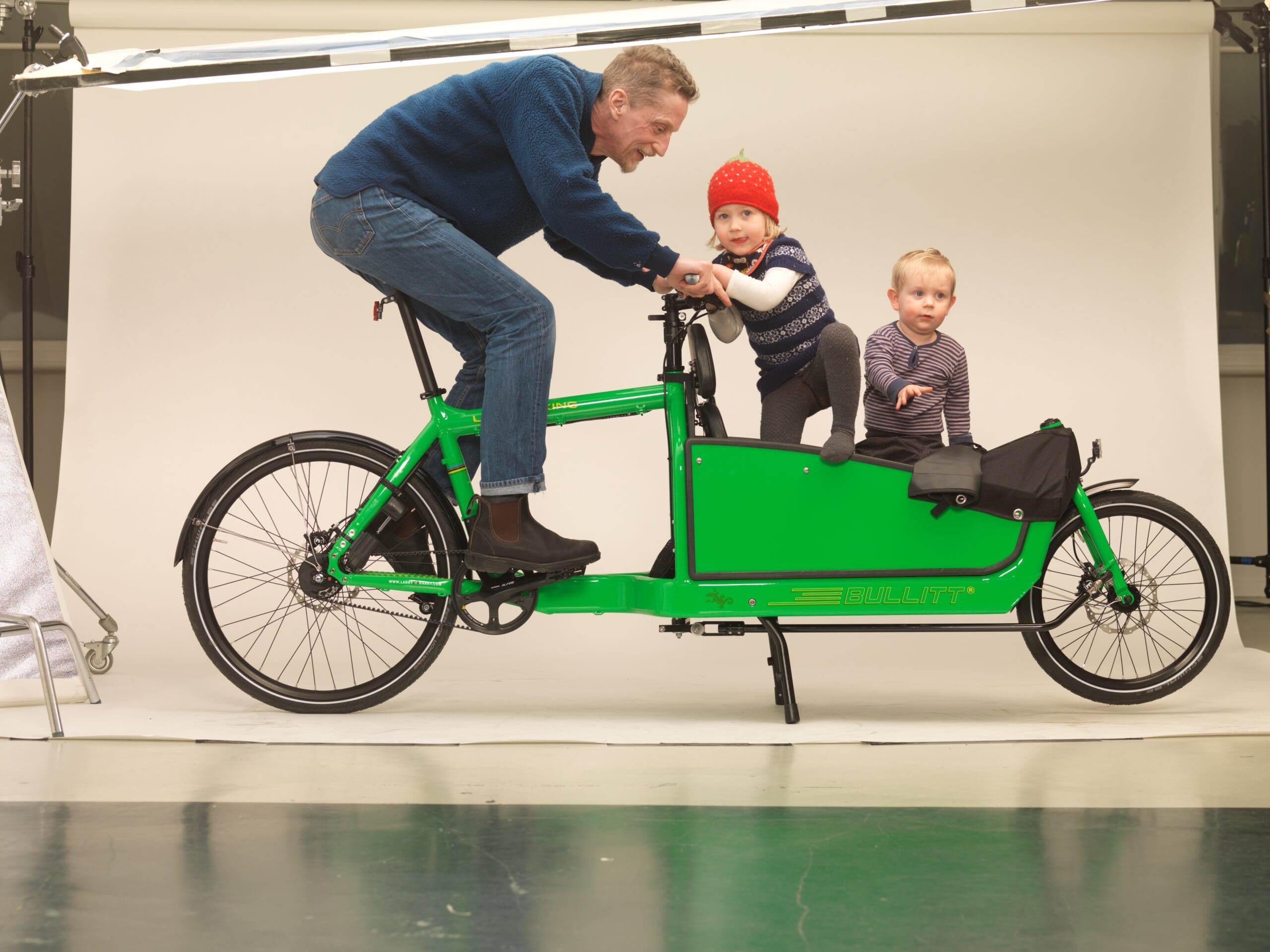
Now, pause for a second here and think of what this means. In Europe, car ownership is 40% lower than the USA, yet the most common cargo bike seen in USA bike stores is a longtail. This is important to note because longtails are considerably less safe than European front-loaders. Front-loaders all feature a highly tested impact-resistant box that functions as a safety cell in case of an accident.
Rearview Thinking
Consider this: for bicycles, rear-end collisions make up the majority of accidents in the USA. And, according to an academic study, rear-end accidents account for the majority of all fatalities. The rear-end of the bicycle, in other words, is no place to put a child – especially without proper impact resistance. The rail that the kids hold onto on a longtail is not a safety cell. It’s a handle that doesn’t have a handle on safety.
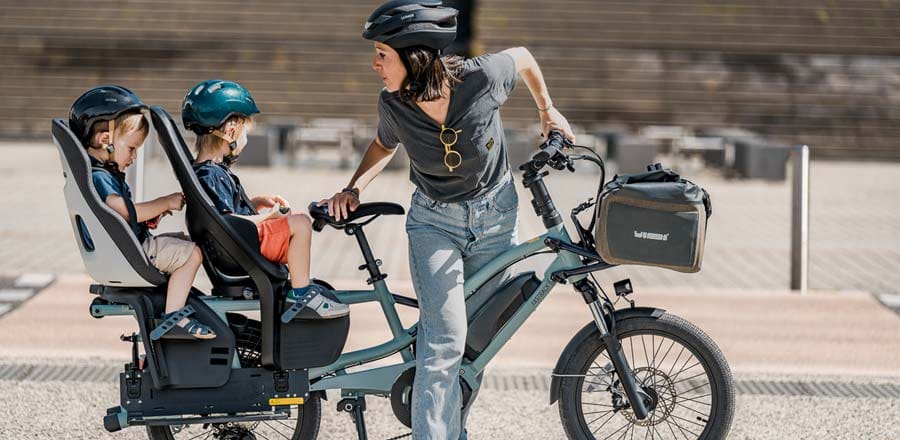
Compared to the safety of a front-loader, we would argue that longtails are not safe at all. Once again, this all has to do with the origin story. The reason front-loaders are safe is because they were designed in Europe for the traffic realities of Europe. Along the way, rigorous testing and regulative approvals were put in place, like EN 17860, which cover vehicular impacts and passenger safety. On the other hand, Longtails were designed for the traffic realities of Nicaragua.
Haphazard Design Limbo
Considering that the traffic realities of North America include exponentially more cars than Europe with far less quality bicycle infrastructure, we find the presence of longtails strange. If North America was to produce it’s own cargo bicycle to its traffic realities, it would minimally feature the protective safety cell of a front-loader. And, there would also be a growing set of mature regulations. Currently, there are neither. If North America’s bicycle regulations and infrastructure tends to be haphazard, the same could be said of North American cargo bike design.
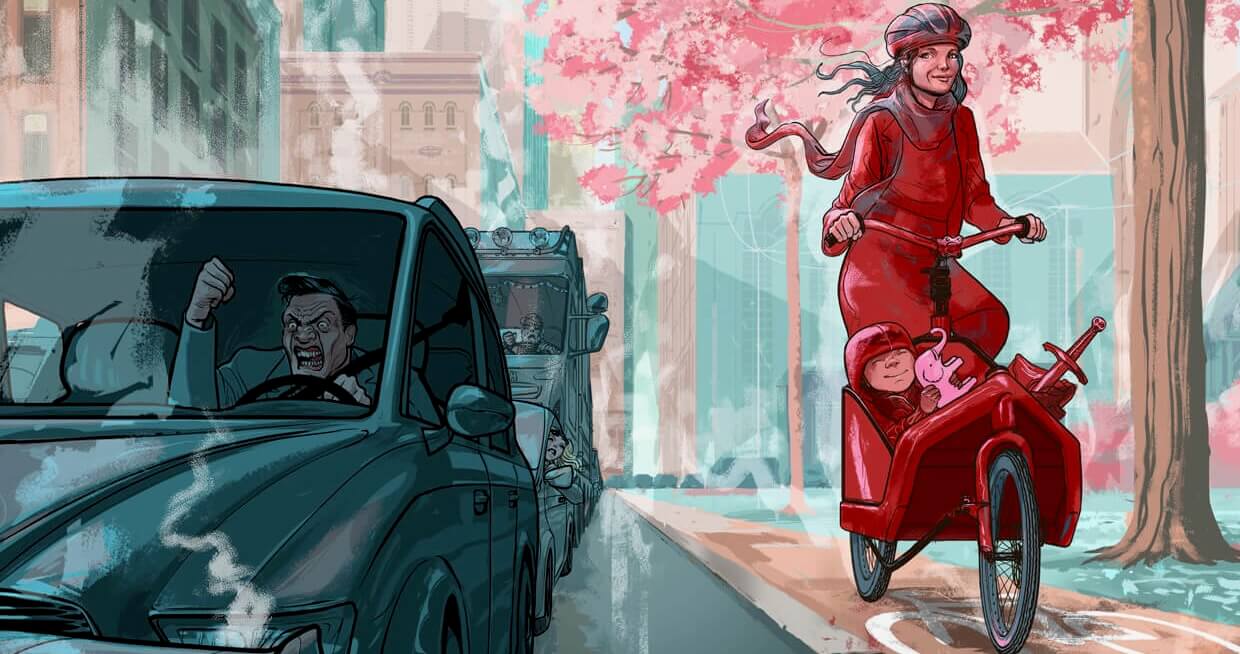
Interlude: Bicycles are Competitive
The reason Europeans have the mature cycling ecosystem is tied to the inherent competitive efficiency of a bicycle. Most European cities have always had dense downtown cores that make the majority of trips too far to walk and too close to drive. Citizens, who value their time and money, chose bicycles because bicycles were faster for a majority of their daily trip distances. In North America, this is also happening, but it’s happening after a long, failed flirtation with the automobile. Cyclists might be ahead, but infrastructure and especially bicycle design are far behind.

Property values in North America today follow the European model, where higher proximity to amenities mean shorter trips. This increases real estate price. But, in this transition period, old habits die hard. A majority of car trips in North America are still under five kilometers, a distance that a bicycle can outcompete. In fact, these shorter car trips are what produces the gridlock that a bicycle has always been able to solve. Canadians have often been compared to Europeans, but when a city like Toronto is now the third worst for gridlock in the world, we might want to deepen our European sensibilities!
Upward Mobility
So, are we proposing a world that looks more like Nicaragua? Oh heck, not at all. While many might think that the Netherlands and Nicaragua have much in common due to their reliance on the bicycle, it’s important to remember that car ownership in the Netherlands is the highest in Europe. But, so is bicycle ownership. In fact, these two are inextricably correlated. The big mistake is thinking the Dutch use their bikes for all trips. Sure, you might see a lot of bicycles in Holland, but what they have in common is that they generally only ride distances of 7.5km. That’s where a bike works best, whether it’s Toronto, New York, Amsterdam or Groningen. Where a bike cannot compete is distances above this. Anything else is just fantasy.
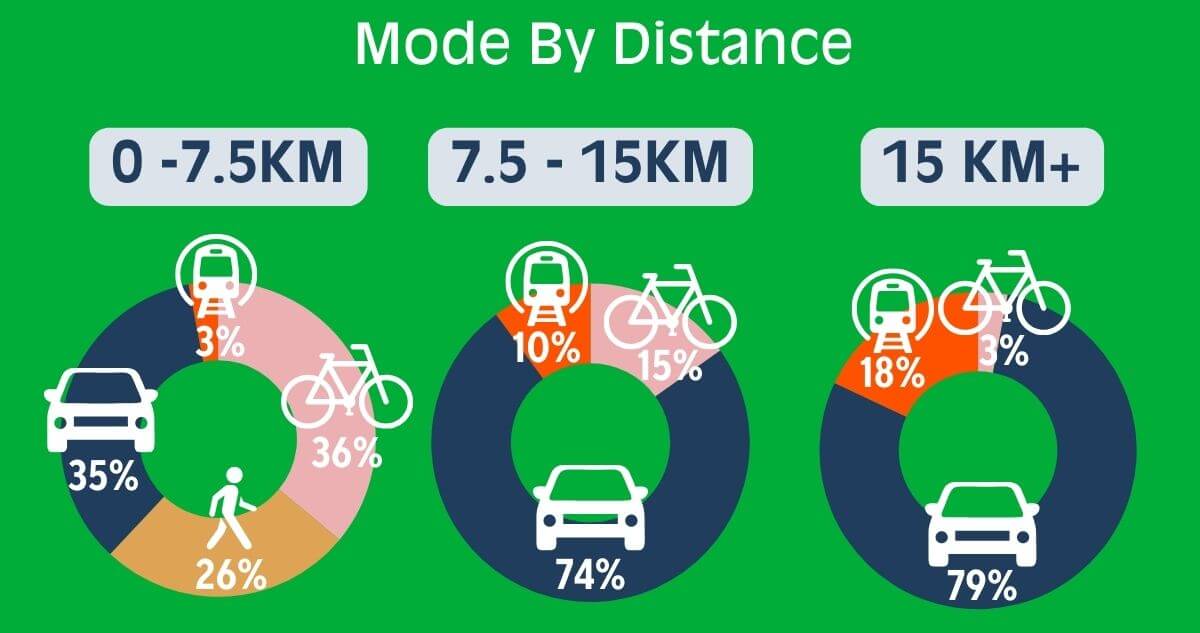
In the Netherlands, this mobility is certainly tied to automobile use – the ability to road-trip across continents – but also bicycle use: the ability to get to work and do everyday life. The automobile might log the highest amount of annual kilometers, but it also logs fewer individual trips. The bicycle logs the majority of individual trips, but logs fewer kilometeres. Economically, it’s straightforward: if most short trips are done by bike, the money saved helps cover the cost of a car. If wealth is tied to mobility, this is it. So, if you can conduct the majority of trips by bicycle then you are one less person trapped in gridlock.
Shared Origin Stories
If the Netherlands and Denmark figured this out before us, luckily here in North America we are beginning to catch up. And, luckily its easy to import safe solutions that ensure highly regulated – and tested – safety. We might even argue that cargo bike “safety” reveals a big difference between the Netherlands and Denmark. In the Netherlands, bicycles have been seperated from cars for so long that it’s arguable that bicycle design is made for safety in bike lanes rather than for safety on roads. In Denmark, safe bicycle design began in a city with zero bicycle infrastructure, so bicycle design always carried that extra burden. This is why Danish bicycle design tends to offer better solutions for North America. Denmark and North America share the same origin story.

Consider the issue of weight. Because Denmark once had the same urban sprawl of North America, it was important that cargo bikes were light in order to shrink distances faster. This was especially important for commercial delivery in Copenhagen, which is where the cargo bike finds its origins (see picture, above). When the cargo bike moved to Holland it was because the Dutch saw a Danish invention that would be perfect for carrying kids. Along the way, suddenly a lightweight bicycle designed in Denmark became a heavy beast designed with a steel frame and a wooden box. And, all future attempts to make the Dutch version lighter still couldn’t beat the original Danish version.
Weight a Moment
Take the original Dutch mass-produced cargo bike, the Babboe City. This bike, first launched in 2007, weighed in at 143lb for an electric version. This bike was so heavy that in 2023, every single unit Babboe produced was recalled for the frames breaking under their own weight. In 2011, a company named Urban Arrow tried to lower weight with an aluminum frame and EPP Foam box. But, their bike still weighed 110lb. As the cargo bike moved to Germany, companies like Riese and Muller managed to get the weight down to about 90lb. But still, no one has been able to correct the drift. A Bullitt bikes starts at 45lb and it’s so strong that it’s the first choice of commercial delivery companies across the globe.
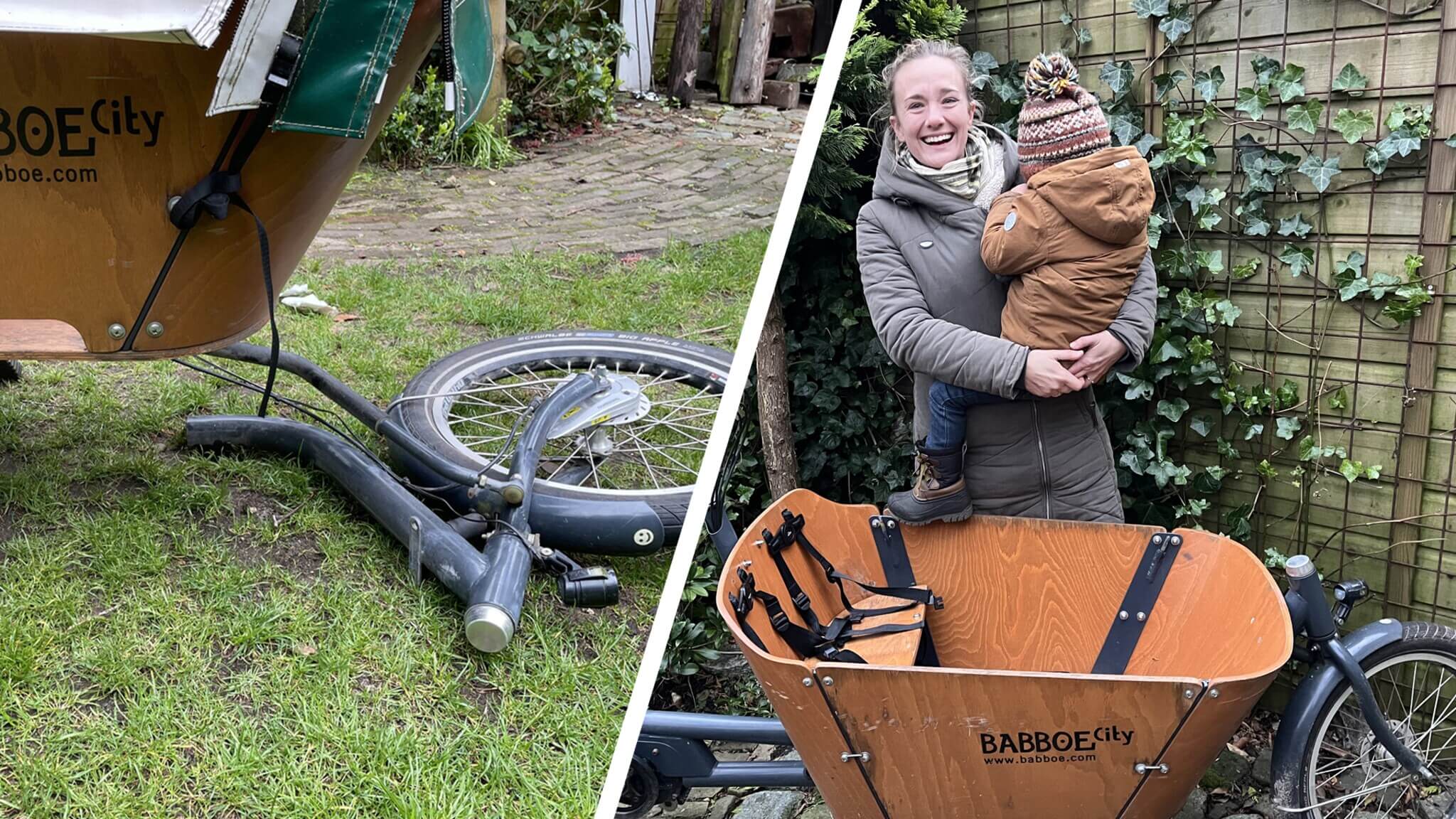
Like Babboe, Bullitt began in 2007. Both brands were the first two companies to mass produce the cargo bike at scale, yet the two companies couldn’t be more different. Whereas Babboe’s origin story was to mass-produce the steel-and-wood Dutch version of the Danish cargo bike, Bullitt’s origin story was to produce the original lighweight Danish cargo bike at scale, because no one had ever done that before. That meant producing a bike that was highly modular, lightweight, and made to shrink distances.
False Choices
This is important because Bullitt solves the false choice many buyers of a cargo bike face today. Whereas big heavy Dutch bikes like Urban Arrow or Germany bikes like Riese & Muller tend to weigh in excess of 100lb and lack maneuverability, a longtail is often lighter and has much better maneuverability. Customers feel they have to choose between great handling – which feels safer – or a protective safety cell around the kids, which is safer. A Bullitt is proof that safe handling and protection for the kids is essential to a front-loading cargo bike.
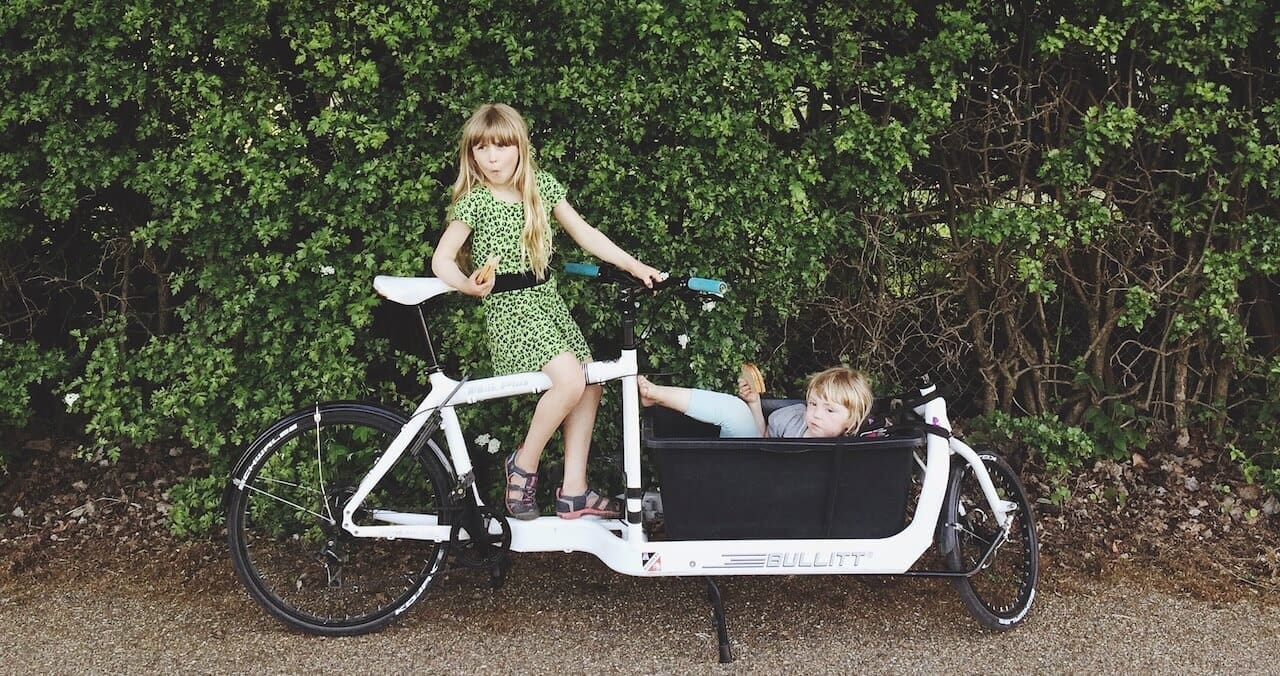
While a longtail may be categorically safer than a bicycle trailer or a bike with a child seat, the protective impact-resistant box on a front-loader is categorically safer than a longtail. But, the problem remains: how can I get a bike that has the lightweight maneuverability of a longtail with the safety of a front-loader? And the answer has been right there since the beginning: a Bullitt cargo bike.
Lifetime Companion
From a sheer design point of view, the Bullitt makes no default assumptions about who is riding the bike or what the cargo is. Whereas all cargo bikes that followed the Dutch design tend to privilege kids as the primary cargo, a Bullitt is the only bike you don’t have to sell once the kids grow up. With it’s modular flatbed, a Bullitt can accept anything from an impact-resistant box for kids, to an secure RFID box designed for commercial freight delivery. Want to ride outside of the city? A Bullitt is the only cargo bike that you can go bike touring with.

Likewise, a rider doing commercial freight delivery might want a pitched-over, aggressive position, whereas a Mom riding her family around might prefer a bolt-upright “dutch-style” position. The Bullitt is the only cargo bike that let’s the rider tune the riding position, and even the steering control (we highly recommend the Bullitt damper kit). A Bullitt, in other words, is the only bike that is perfect for a life before kids, during kids, after kids, or no kids at all!
Where Does the Longtail Make Sense
As we’ve seen, in terms of safety, a longtail isn’t nearly as safe as a front-loading cargo bike. But, it’s still a better choice than a trailer or child-seat. Origin story has much to do with this. The origin story of the front-loading cargo bike was found in previous automobile cultures like Copenhagen that lacked the critical infrastructure to ensure safety at the time. That meant the bicycle itself had to be responsible for passenger safety.
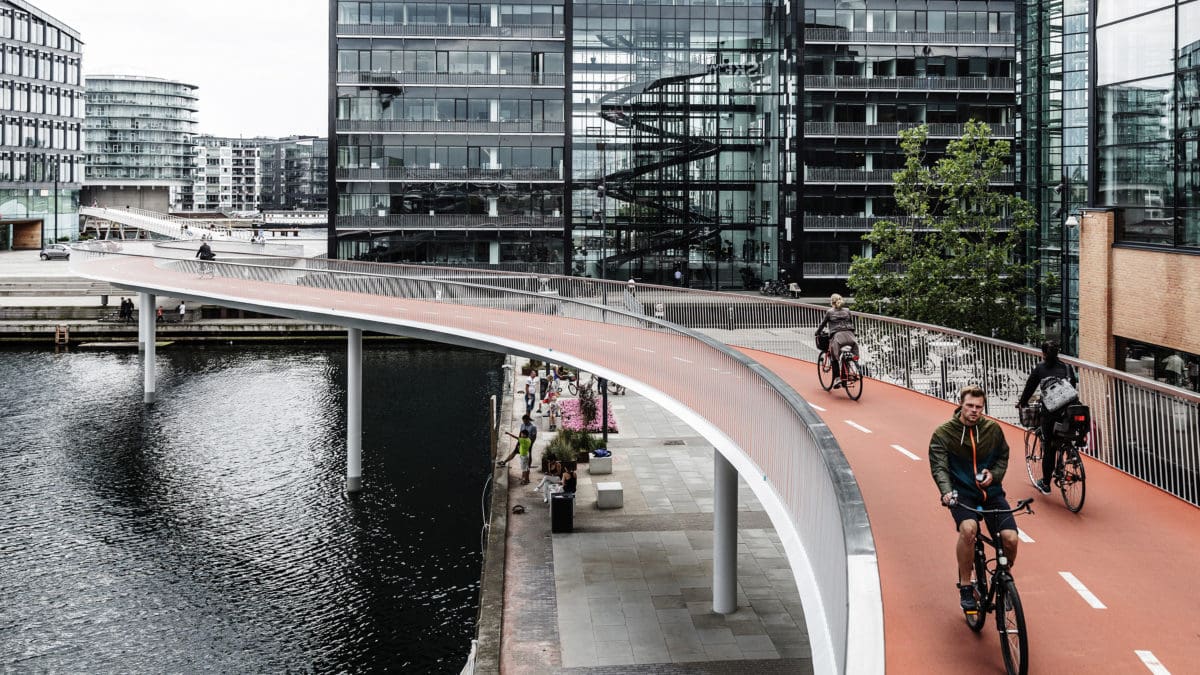
Today, Copenhagen has 390km of bicycle infrastructure including bicycle superhighways, protected lanes, and painted lanes. That means that civic infrastructure is carrying more of the burden, lowering the need for safety in product design. It is for this reason, perhaps, the the Dutch and Danes have expressed curiosity about the longtail bike. But, for all the curiosity safer designs stubbornly persist in the Netherlands and Denmark. It is rare to see a longtail except on car-free recreational bike paths. The reason is pretty easy to understand: there are human lives in the passenger seat.
Conclusion
From safety to handling, versatility to longevity, the Bullitt cargo bike has always been ahead of the curve. Designed in Denmark to navigate real-world traffic, it combines lightweight maneuverability with a highly tested impact-resistant box. This is something no longtail can offer. While longtails were conceived as an affordable alternative to cars in low-traffic environments, Bullitt was designed for the reality of modern cities, where safety and speed matter equally.
Next Steps
Interested in a Bullitt? We’d love to learn what your needs are and how a Bullitt might help! Book a sales appointment and we can meet you in the store or remotely by phone or video conference. Or, ask us a question using the form below!


